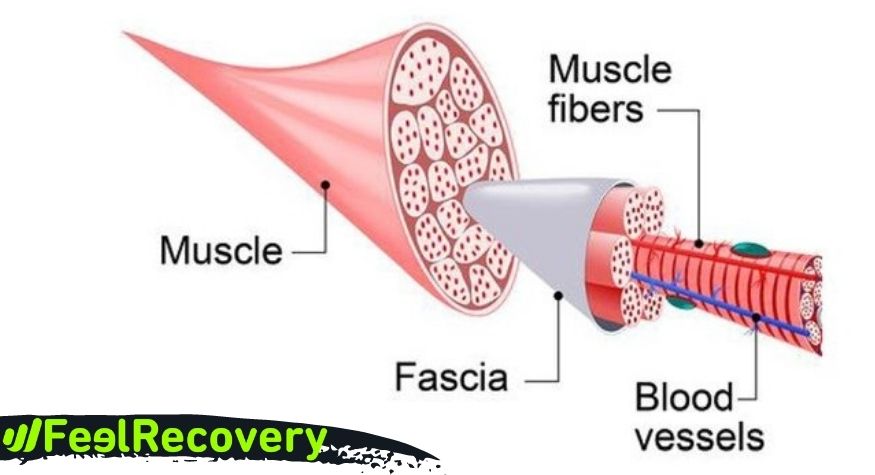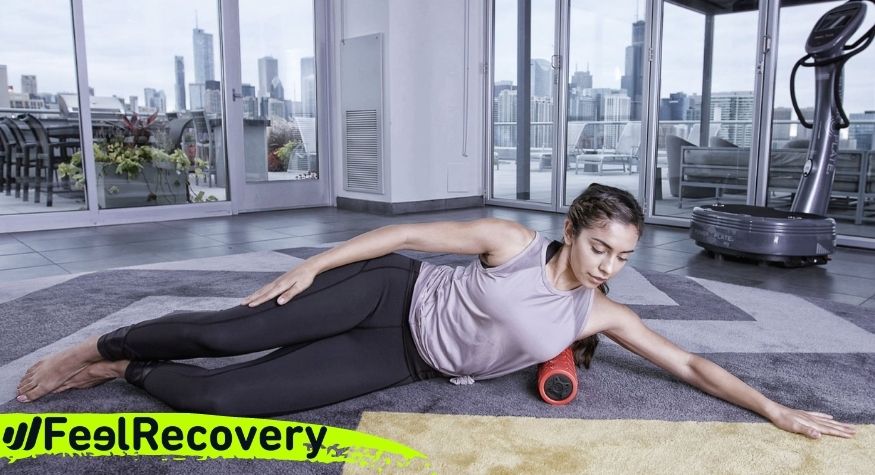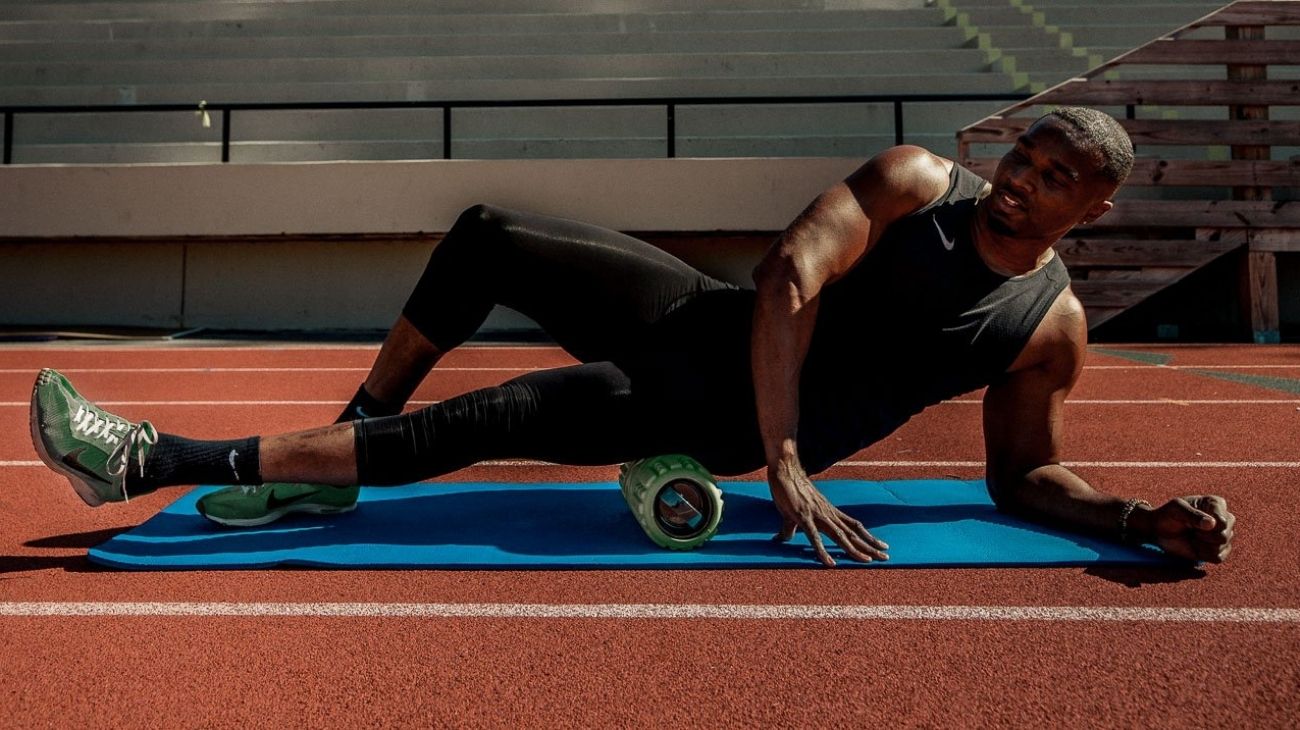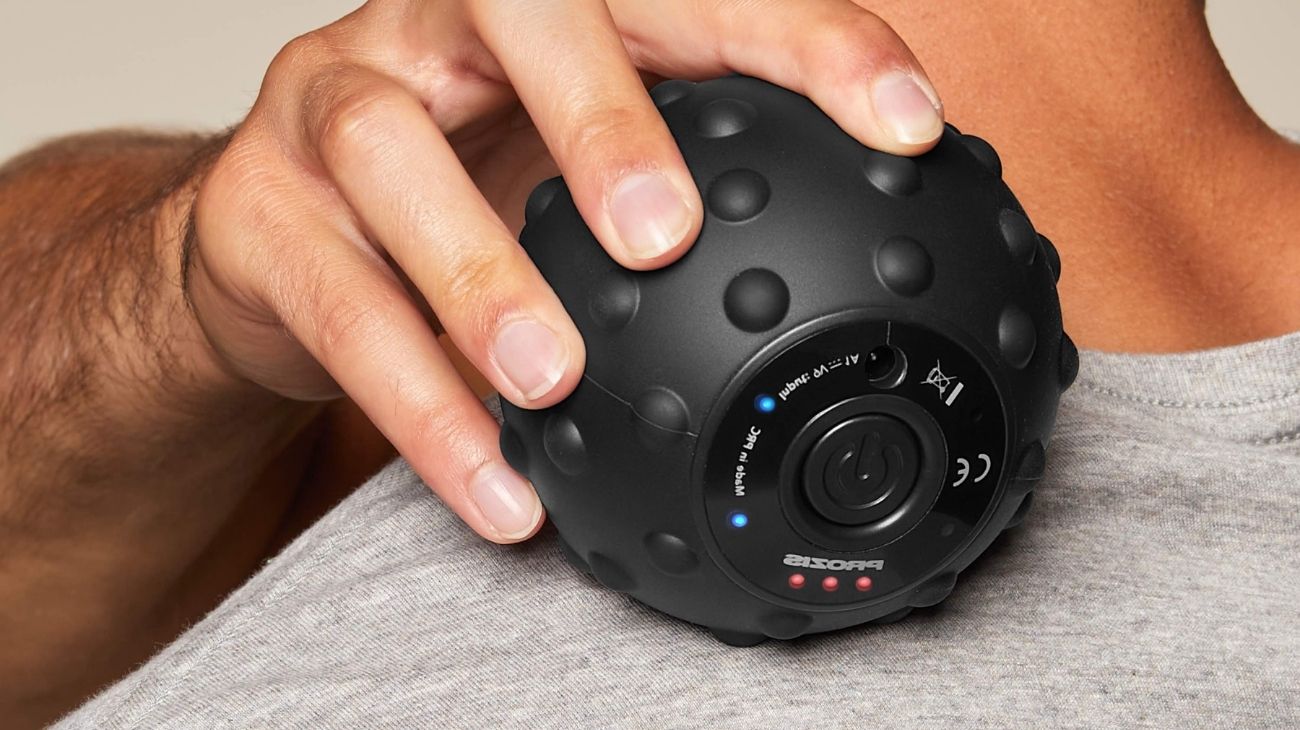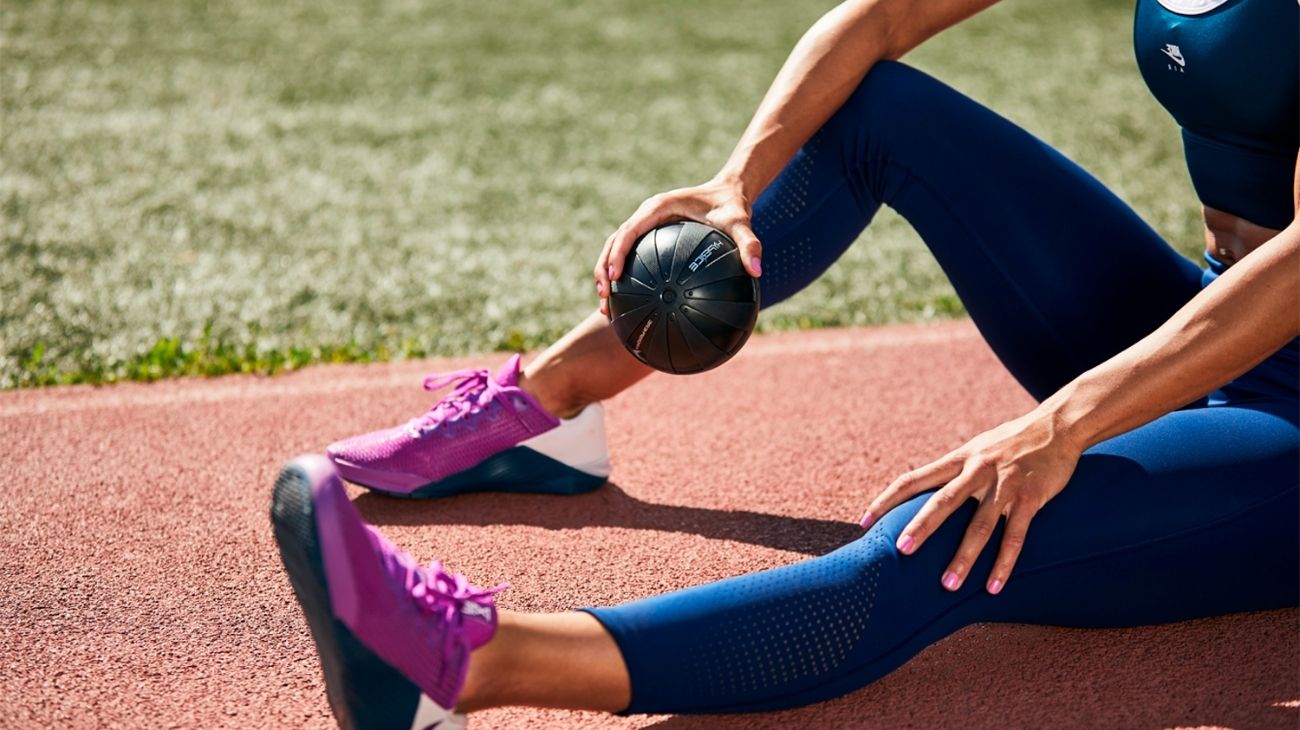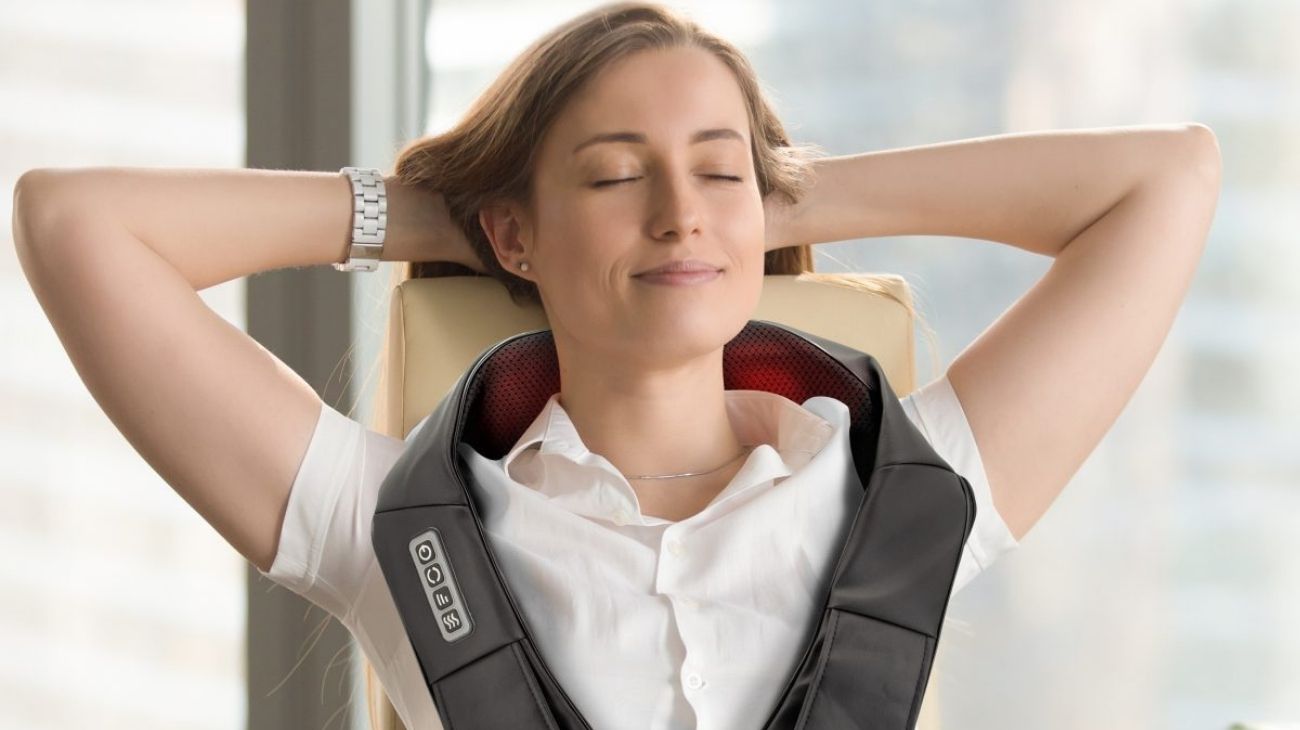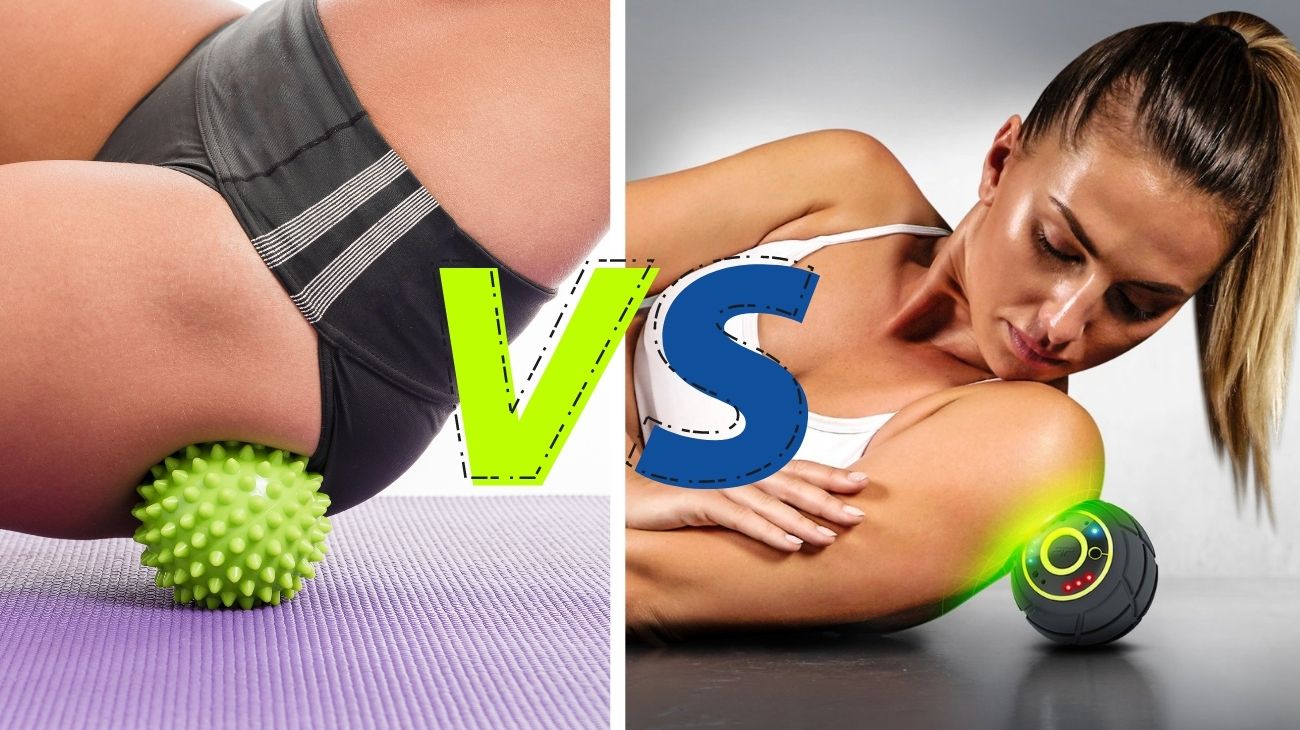Vibration massages began in a different way to what we know today, nowadays they are more effective using devices such as rollers and electric balls that offer greater uniformity and depth within the reach of any type of person.
Much of the success of massage therapies will depend on the routines that are performed, the time, regularity and rest that the tissues have before being subjected to vibration stimulation. Find out everything you need to know about the use of the electric Foam Roller.
Myofascial release therapy
Did you know that using a vibrating foam roller can increase blood flow and muscle relaxation by up to 22% more than a regular foam roller? A study published in the Journal of Sports Science & Medicine found that vibration enhances the effects of myofascial release, leading to greater circulation and improved tissue oxygenation. This makes it ideal for post-exercise recovery, reducing stiffness, and improving overall muscle performance.
Fascia is a type of tissue, very dense and irregular, that covers all areas of the body and alters people's mobility when nodules, trigger points and tensions appear that can be treated with a good massage.
Through different techniques, people can achieve myofascial release, but vibration and friction are the massage modalities that have been studied the most and have the best effect on this membrane.
A myofascial release aims to relax the fascia, eliminate micro contractures and help the musculature to remain flexible. The vibrations help to have a powerful effect because of their relaxing quality and because they complement the gliding that people do during the routines.
Is vibration better? It is not a question of whether it is better or not, the correct thing to say is that recovery time is considerably reduced when vibration is combined with the use of the Foam Roller and therapeutic massage balls.
Vibrating Foam Roller for myofascial release
Did you know that rolling your upper back with a vibrating foam roller can improve posture and reduce tension headaches? Research in the International Journal of Sports Physical Therapy found that myofascial release targeting the thoracic spine helps reduce muscle tightness in the upper back and shoulders, which are common sources of tension headaches. Just 5-10 minutes of rolling daily can relieve stiffness and improve spinal mobility.
If you want to have a quick and permanent effect with this type of massage, there are several factors to take into account from the first routine.
The technique
There are several generalities that you should know before using this product, because many people start to apply pressure in an inappropriate way and generate more harm than good.
To begin with, you should start with a roller with no bumps or ridges if you have not had previous experience. Start with little sustained pressure on the area where it hurts, the glides should be gentle and you should have the limb you are working with well extended.
If you want to approach the joints, do so with caution, one of the mistakes patients make is believing that with the electric roller they will be able to regulate pain due to joint wear and tear. Under no circumstances should this type of product touch the joint structure.
In addition, you must respect the times of use, as 10 minutes of pressure on a single area will only damage the tissues. Before starting therapy, remember to be well informed about the type of ailments you wish to treat with both the roller and the vibrating massage balls.
Pressure
The pressures with both the roller and the balls are applied with your body weight. A false movement, imbalance and overconfidence can cause damage such as bruising, contractures and muscle knots that are difficult to treat later. At all times, the hands and legs should be used to regulate the weight of the body and prevent additional pressure from tarnishing a session that should only have been for relaxation.
Specialists recommend starting with less pressure and gradually increasing the workload on the Foam Roller and balls. As practice progresses, you will be able to manoeuvre better with more pressure as your body adapts to the new demands. If a technique is applied incorrectly, tingling and numbness are likely to occur due to an abrupt cut in the blood flow where the massaging product comes into contact.
Session duration
How long should a myofascial release therapy last? The first thing you should notice is if there is pain or discomfort when the massage is performed, in which case, the therapy is short. If the pain is unbearable, it is better to have the guidance of a specialist to perform the necessary examination. When there is little pressure, each muscle group should be massaged for two to three minutes. When the pressure is higher, 4 to 5 glides are performed on sensitive areas such as the calf and forearm.
In terms of regularity, abusing the use of these electric massagers is like doing a strenuous sports workout. Muscles and fascia require a rest in which they can recover from the massages and become active again. Unless the routines and areas to be stimulated are varied, daily use of these electrical products on a single part of the body is not recommended to avoid fatigue and injury from overuse.
Not a cure
One of the myths of myofascial release therapies is the belief that they are miraculous, that they can replace clinical treatment when there are injuries. The use of these products is preventative, thus avoiding injuries that can be avoided when the muscles are more resistant to constant massage. Both the roller and the balls serve as a complement to recovery therapies, so they are not a replacement for the expert hands of a physiotherapist, who knows best where to stimulate to soothe the symptoms of an injury.
Vibrating Foam Roller Exercises: Upper body
Upper pectoral
This routine will allow us to work the pectoralis major, which affects the movement of the shoulder during extension, including adduction and flexion. The pectoralis is a sensitive area despite its large extension, so the pressure should be moderate.
- Place the Foam Roller on the floor.
- Lie on your stomach, place the roller under your right pec.
- Keep your torso slightly inclined, so that your body weight is on your right side.
- Extend your right hand, palm touching the floor.
- Use both hands and legs to slide your body back and forth.
- Perform five slides.
- Now turn the roller on at its lowest intensity.
- Perform five or six more glides with the vibration on.
- Repeat these steps with the left pec.
- If you feel no discomfort or pain, you can extend the routine for two minutes.
- All movement should be gentle.
Pectoralis medius
The pectoralis medius has a major impact on the movement of the scapula, one of the bones that make up the shoulder joint. To work this muscle group, there should be no sliding, only pressure is required.
- Place the massage roller on the floor.
- Place your body on the roller with a slight incline on the right pec.
- Turn on the massage roller.
- Control the pressure on this product with your body.
- Apply stimulations for a maximum of one minute if you do not feel any discomfort.
- The initial time is 30 seconds with the vibration on.
- Repeat this cycle with the left pectoral.
- Remember that the pressure should be light.
Pectoral and shoulder
By taking care of the pectoralis, you ensure good function of the entire shoulder joint, which is quite complex and has a large range of motion. Try this routine with pressure and vibration only.
- Start with the right and right pectoralis major.
- Position your body over the roller in the on mode.
- Apply gentle pressure and do not make any movements.
- Your right arm should be extended, with your palm on the floor.
- Let the vibrations work for 20 seconds.
- Relocate the roller to the pectoralis minor.
- Maintain gentle pressure for a further 20 seconds.
- Now move the torso so that the stimulation is on the intercostal muscles.
- Hold this position for an additional 10 seconds.
- Place the roller under the deltoids, rotate your body slightly to reach this position.
- Allow the roller to act for another 10 seconds.
- The application time should be kept short to avoid fatiguing these muscle groups.
Vibrating Foam Roller Exercises: Upper Back
Serratus muscle
This muscle group controls the mobility of the scapula, so it should be massaged gently to ensure that the shoulder has full range of motion.
- Place the Foam Roller on the floor.
- Place your body on your right side on the roller.
- Use your right elbow and forearm to control the pressure on the product.
- Perform smooth glides, do 10 repetitions.
- Turn on the roller and perform 10 more repetitions.
- The massager should only touch the intercostal muscles.
- Switch sides and repeat the above sequence.
Trapezius and scapulae
If you want to release stress tensions, then this routine will be ideal for draining pressure in the upper back.
- Lie on your back and make sure that one half of your upper back touches the roller.
- The muscles covering the shoulder blade should make contact with the Foam Roller.
- Make sure that the roller does not slide unevenly.
- Lift your pelvis and with your legs move your body forwards and backwards.
- Both muscles require a lot of pressure, so you will not be able to regulate the pressure.
- However, if you feel discomfort you should stop the session.
- The gliding with the vibration on can be done for one minute.
- Now place the roller on the other half of the back.
- Repeat the same cycle.
- Remember to give yourself an hour's rest before doing this routine again.
Trapezius
If you need to better stimulate the trapezius muscles, you can additionally offer a vibration-only lap where you will help to relax the muscle fibres.
- Lie your body on your back.
- Place the roller between your upper back and the floor.
- Remember to stimulate one side of your back at a time.
- Keep the roller on at all times.
- Lift your pelvis and make a single slow, smooth stroke.
- The roller should touch from the lower neck to the middle of the back.
- Avoid jerky movements.
- Now place the roller on the other half of the back and repeat the movement.
- It is advisable to do a single pass after the previous routine.
Vibrating Foam Roller Exercises: Back
Back
What is required is the treatment of tensions in the latissimus dorsi muscles. Concentrating energy near the spine directly should be avoided.
- Place your back on the roller, preferably on one side only.
- Lift your pelvis and with your feet perform 10 glides.
- Turn on the vibrating apparatus and perform 10 additional glides.
- Turn your back slightly so that the roller covers the entire back muscle.
- If you feel excessive tension, stop the movement to concentrate the vibration on that point.
- This static stimulation should last an additional 20 seconds.
- Place the roller on the other half of the back and repeat the sequence.
Middle back
Although rare, back pain can also be a problem for people with sports training that requires strength. To relieve tension, try this simple routine.
- If the roller is long, you can cover the entire back in one session.
- If not, you should work one half at a time.
- Place the roller under your back.
- Make short forward and backward movements.
- You can do the passes for one minute.
- Turn on the vibration and keep the pressure where there is the most muscle soreness.
- Remember to control body stability with both legs bent.
- Concentrate the vibrations in one place for only 20 seconds.
Lower back
A great way to release tension is by massaging the quadratus lumborum muscle, where a lot of lower back pain is also concentrated.
- Place the massage roller on the floor.
- You should stimulate each side at the same time.
- Place the right quadratus lumborum muscle on the roller.
- The body should be oblique and not perpendicular to avoid damaging the ribs.
- Perform short, low-pressure movements.
- Try repetitions for one minute before changing sides.
- Change your body position to stimulate the left quadratus lumborum muscle.
- Repeat the dynamic stimulations.
- Remember to keep the vibrations on.
Vibrating Foam Roller Exercises: Legs
Did you know that using a vibrating foam roller on the calves can improve ankle mobility and reduce the risk of Achilles tendon injuries? A study published in the Journal of Athletic Training found that myofascial release on the calf muscles significantly increases dorsiflexion range of motion, which is essential for proper walking, running, and squatting mechanics. Rolling for just 2-3 minutes before activity can enhance flexibility and prevent common lower-leg injuries.
Hip flexors
These flexors allow the lifting movement of the thigh over the hip, they act on the forward traction of the body.
- Place your body on its side on the massage roller.
- Keep your lower leg extended.
- Use the upper leg to gain stability, the sole of the foot should touch the floor.
- Use your arms to generate a smooth glide.
- Perform 10 repetitions and then turn on the vibration.
- Continue doing repetitions for 20 seconds more.
- If you feel discomfort, you should stop the session.
- Switch sides to stimulate the flexor torus.
Iliotibial band
The job of the iliotibial band is to help the hip muscles perform the abductions and rotations required for walking and jogging.
- Drop your body sideways onto this product.
- Your body should be completely perpendicular.
- Use your hands and upper leg to gain stability and make the movements.
- Perform 10 forward and backward movements.
- Try not to exert too much pressure.
- Turn on the massager and perform 10 glides again.
- If you feel discomfort, try to reduce the body pressure.
- Where you feel the most tension, stop the movement and concentrate the vibrations.
- Now switch sides and repeat this cycle.
Quadriceps and hamstrings
These are the main leg muscles that enable people to perform all kinds of movements such as walking, standing and sitting. The stability of the back also depends on their function.
- It is advisable to do a routine just for these areas of the leg.
- Start with the quadriceps, lie on your stomach and place the front of your thigh on the roller.
- Keep your leg fully extended.
- With the other leg and arms, perform smooth glides.
- Repeat for one minute if you don't feel any discomfort.
- Switch the roller to the other leg and follow the above steps.
- Give yourself a five-minute rest before working the front of the thigh.
- Sit on the floor and place the roller under the biceps femoris.
- Keep your leg fully extended.
- Use your hands and free leg to do 10 glides.
- Turn the machine on when you feel comfortable with the stimulations.
- Try to do 10 more strokes slowly.
- Take a five-minute break before moving on to the other leg.
Calf muscles
The calves are the main calf muscles and are also the most sensitive to stimulation. Care should be taken when performing the routines to avoid tissue damage.
- Since you have an electric massager, try to use pressure only.
- Sit on the floor and place the roller under one calf at a time.
- Use the vibrations with less intensity and let the vibrations flow.
- The Foam Roller will cause the fascia and muscle fibres to relax.
- You should provide stimulations for 50 seconds.
- If you think you will feel better with the gliding, do gentle strokes with the device on.
- You can do 15 slow glides.
- Now place the roller on the other calf and follow the above steps.
- Remember that there should be no sudden movements.
- If you feel pain, stop the session immediately.

